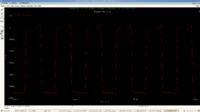palmeiras
Full Member level 6
- Joined
- Feb 22, 2010
- Messages
- 375
- Helped
- 61
- Reputation
- 122
- Reaction score
- 50
- Trophy points
- 1,308
- Location
- South America
- Activity points
- 4,199
Hello guys,
I’m designing a simple ring oscillator. I’m going to measure the phase noise and the output voltage swing of this oscillator.
Can I use the spectrum analyzer to see and measure the output voltage swing? Can I see time-domain signal? (Or I'll be able to see only the frequency domain?).
Thanks very much
I’m designing a simple ring oscillator. I’m going to measure the phase noise and the output voltage swing of this oscillator.
Can I use the spectrum analyzer to see and measure the output voltage swing? Can I see time-domain signal? (Or I'll be able to see only the frequency domain?).
Thanks very much
